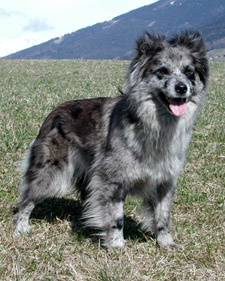
The Breed History
Evidence of sheepdogs in the Pyrenean mountains dates back to
6000 BC. Pyrenean Sheepdogs were used solely for herding and
companionship, and not for protection; that role was left to the
Great Pyrenees. It is believed that when the Virgin Mary appeared
to the young shepherdess Bernadette Soubirous in the grotto at
Lourdes in 1858, her little Pyrenean Shepherd was by her side.
They are often referred to as "the dog that saw God." Pyrenean
Shepherds distinguished themselves in the Pyrenees during World
War II as couriers, and search and rescue dogs. The smooth-faced
variety was used to establish the Australian Shepherd breed. The
majority of Pyrenean Shepherd breeding stock was imported to the
US in the 1970s and 1980s. AKC recognition occurred in 2009.
Breeding for Function
Pyrenean shepherds are breed to maintain a high degree of herding
instinct and soundness. Their small size allows them to be quicker
and more sure-footed on windy mountain crags. They should be
selected to maintain breed type and working ability.
Physical Characteristics
Height at Withers: Rough-Faced: females 15-18" (38-46 cm),
males: 15-1/2-18-1/2" (39-47 cm). Smooth-Faced: females
15-1/2-20-1/2" (39-52 cm), males 151/4-21" (39-53 cm).
Weight: 15-32 lbs (7-15 kg). To be kept lean, muscular, and
never fat.
Coat: Rough-Faced: The Rough-Faced dog's coat can be of long or
demi-long hair. Demi-long dogs have culottes on the rump, while
the long-haired dogs are more heavily furnished with woollier
hair that may cord. Smooth-Faced: The muzzle is covered with
short, fine hairs. The hair becomes longer on the sides of the head,
blending into a modest ruff. The hair on the body is fine and soft,
attaining a maximum length of no more than 3 inches for the
ruff and culottes, 2 inches along the back. Various shades of fawn
from tan to copper, with or without a mixture of black hairs; grey,
ranging from charcoal to silver to pearl grey; merles of diverse
tones; brindle; black; black with white markings not exceeding 30%
of the body surface. A little white is acceptable on the chest, head,
and feet.
Longevity: 9-12 years.
Points of Conformation: The dog in good working condition is
lightly boned and sinewy. In rough faced dogs the body is clearly
long in proportion to the height of the dog, whereas Smooth-Faced
dogs appear much more square. The head is triangular in shape,
and small in proportion to the size of the dog. The eyes are
almond-shaped and dark brown in color, except in merles where
blue or partially blue eyes are acceptable. Eye rims must be black.
Ears can be cropped and erect, or natural and semi-prick. The
head is a triangular wedge shape, with no stop. The nose is black.
The back is level. The tail can be docked, natural bob, or long. The
feet are oval, with double, single, or no rear dewclaws. The gait is
flowing, with the feet barely leaving the ground.
Recognized Behavior Issues and Traits
The Pyrenean Shepdog is a high energy, intelligent, and mischievous
dog that is always on alert, suspicious, ready for action. An ardent
herder of all kinds of livestock. The Pyr Shep is naturally distrustful
of strangers, but when well-socialized from a young age, he or she
has a very lively, cheerful disposition. He is very affectionate with the
members of his immediate family. He has the tendency to become
passionately attached to his owner to the complete exclusion of
all others and is astonishingly sensitive to his owner's moods. As a
companion, he is very active and enthusiastic and insists upon being
involved in the day's activities whatever they may be.
Normal Physiologic Variations
Merle Coat Color: Caused by a dominant mutation in the SILV
gene. Breeding two merle dogs together should be avoided, as
homozygous dogs can be born with multiple defects, including
blindness, deafness, and heart anomalies.
Drug Sensitivities
None Reported
Inherited Diseases
Hip Dysplasia: Polygenically inherited trait causing degenerative
joint disease and hip arthritis. OFA reports 20.0% affected. Reported
at a frequency of 11.8% in France.
Elbow Dysplasia: Polygenically inherited trait causing elbow
arthritis. Too few Pyrenean Shepherds have been screened by OFA
to determine an accurate frequency.
Patella Luxation: Polygenically inherited laxity of patellar
ligaments, causing luxation, lameness, and later degenerative joint
disease. Treat surgically if causing clinical signs. Reported as a breed
problem on the Pyrenean Shepherd Club of America website. Too
few Pyrenean Shepherds have been screened by OFA to determine
an accurate frequency.
Disease Predispositions
Cataracts: Anterior cortex punctate cataracts predominate in the
breed. Reported in 7.14% of Pyrenean Shepherds CERF examined
by veterinary ophthalmologists between 2000-2005. CERF does not
recommend breeding any Pyrenean Shepherd with a cataract.
Choroidal Hypoplasia: Inadequate development of the choroid
present at birth and non-progressive. This condition is more
commonly identified in the Collie breed where it is a manifestation
of "Collie Eye Anomaly". CERF does not recommend breeding
any Pyrenean Shepherd affected with the disorder. No genetic
test is available in the breed. Identified in 5.36% of Pyrenean
Shepherds CERF examined by veterinary ophthalmologists between
2000-2005.
Persistent Pupillary Membranes: Strands of fetal remnant
connecting; iris to iris, cornea, lens, or involving sheets of tissue.
The later three forms can impair vision, and dogs affected with
these forms should not be bred. Identified in 3.57% of Pyrenean
Shepherds CERF examined by veterinary ophthalmologists between
2000-2005.
Idiopathic Epilepsy (Inherited Seizures): Control with anti-seizure
medication. Reported as a breed problem on the Pyrenean Shepherd
Club of America website.
Hypothyroidism: Inherited autoimmune thyroiditis. Too few
Pyrenean Shepherds have been test for thyroid autoantibodies at
Michigan State University to determine an accurate frequency for
the breed. (Ave. for all breeds is 7.5%).
Progressive Retinal Atrophy (PRA): Progressive degeneration
of the retina, eventually causing blindness. Reported as a breed
problem on the Pyrenean Shepherd Club of America website. No
genetic test is available.
Primary Lens Luxation: Partial (subluxation) or complete
displacement of the lens from the normal anatomic site behind
the pupil. Can progress to secondary glaucoma and blindness.
Reported as a breed at risk by CERF; who does not recommend
breeding any affected Pyrenean Shepherd.
Patent Ductus Arteriosus (PDA): Inherited congenital heart
disorder; affected dogs are usually stunted, and have a loud heart
murmur. Diagnosis is via Doppler ultrasound. Treatment is surgical.
Reported as a breed problem on the Pyrenean Shepherd Club of
America website.
Isolated Case Studies
None Reported
Genetic Tests
Tests of Genotype: None
Tests of Phenotype: CHIC certification: Required testing includes
hip radiographs, CERF eye examination, patella evaluation, and DNA
donation to the CHIC DNA repository. Optional testing includes
cardiac evaluation. (See CHIC website; www.caninehealthinfo.org).
Recommend thyroid profile including autoantibodies and elbow
radiographs.
Miscellaneous
- Breed name synonyms: Berger Des Pyrenees, Petit Berger, Labrit
- Registries: AKC, Canadian Kennel Club, UKC, KCGB (Kennel Club
of Great Britain), FCI.
- AKC rank: (None) Became an AKC recognized breed Jan. 2009.
Entire studbook registered.
- Internet resources: Pyrenean Shepherd Club of America:
www.pyrshep.com
The Pyrenean Sheepdog Club of Great Britain:
www.pyreneansheepdog.co.uk/
Photo Gallery of Breed - Pyrenean Shepherd - Dog Breed

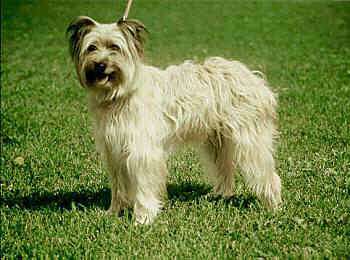
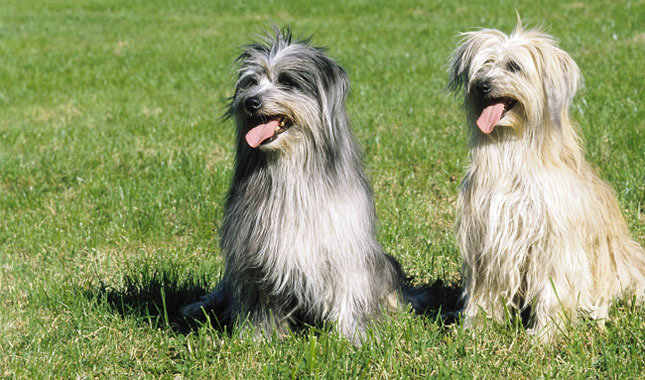

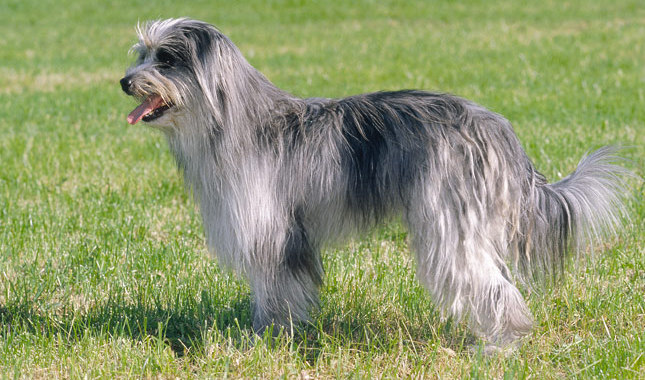


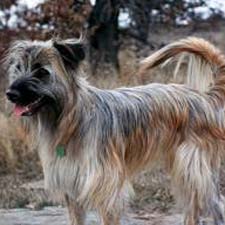
 Animalia Life
Animalia Life